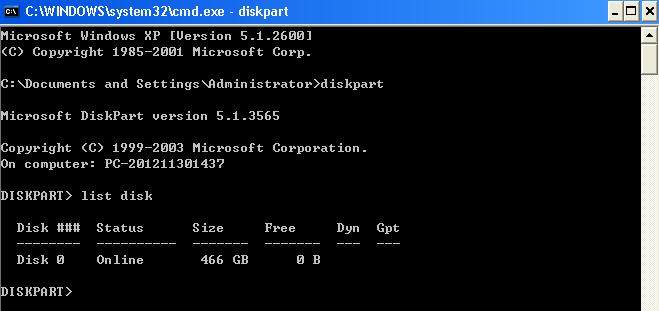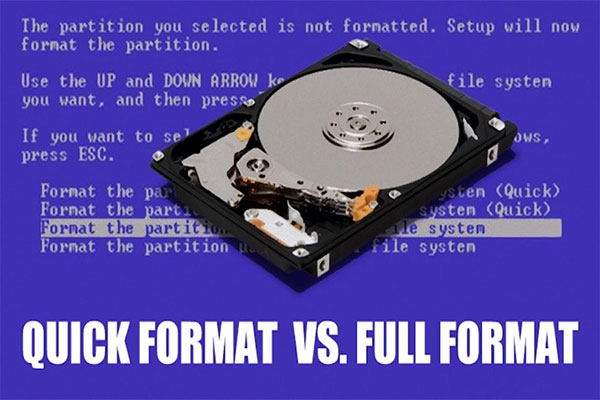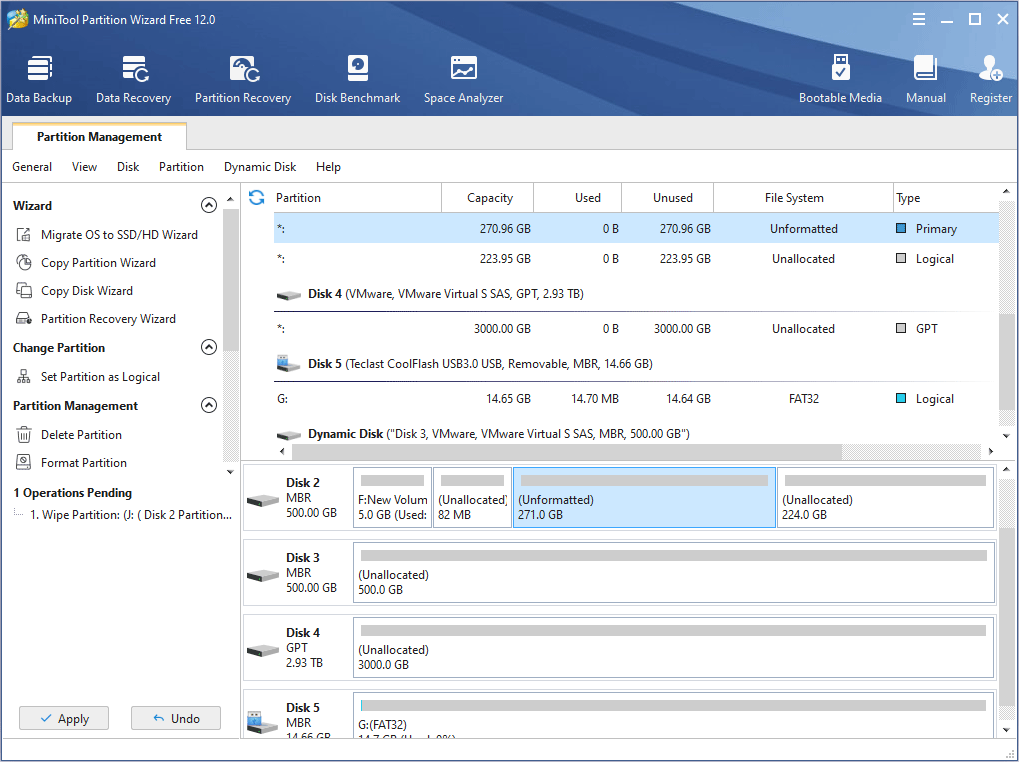
macOS and Linux computers, however, can only read files stored on such a drive they cannot write to an NTFS-formatted drive. NTFS is native to Windows, and most hard drives are preformatted for this file system.
#Quick disk format vs regular windows
If you plan to use your drive for File History backups on a Windows computer, and you use only Windows, stick to NTFS (New Technology File System).So how do those five file systems differ, and which one is right for you? Non-Linux computers can use five main file systems: NTFS, HFS+, APFS, exFAT, and FAT32. If you use a Mac, the likelihood that you’ll have to reformat the drive is higher. But if you buy a drive secondhand or if you plan to switch between operating systems, you may still need to reformat it for use on Windows.
#Quick disk format vs regular full
Want to read more answers from other tech-savvy Stack Exchange users? Check out the full discussion thread here.If you buy an external drive-such as one of our recommended portable or desktop hard drives, portable solid-state drives, or USB 3.0 flash drives-you may need to reformat it to work with your operating system of choice, since different operating systems use different file systems to process data.Īlthough it’s true that any drive is compatible with both Windows and macOS once it’s formatted properly, most drives come preformatted for Windows out of the box. Have something to add to the explanation? Sound off in the comments. It does not make any difference if unused sectors are zeroed out or filled with random data.įor more information, you might want to take a look at the Wikipedia Article for Formatting. With every format the operating system writes the file system structure, and this structure is the starting point for every file system access. Regarding consistency there is no difference. Of course you can always run a ‘chkdsk /r’ later to scan a disk for bad sectors. Then you will probably be wishing you had done a full format that would have checked the entire disk right at the beginning. With bad luck you end up with a successful quick format, and when you want to write data to the disk later, it fails. With a quick format only a few sectors will be written to. Then a full format is a good idea because it accesses every sector, so if any sector is bad, this will be recognized. You might not be sure if the hard disk is in a good state. With specialized programs someone might try to “undelete” your files – the data is still there, the task of the program is to guess/know which data block belongs to which file.Ģ. If you just do a quick format, then the file data is still on the disk, only the file system structure (file names and information where the files are stored on the disk) are deleted. You might have a disk that you want to destroy or give away. But there are cases where you might want to do a full format.ġ. So normally a quick format is what you want because it is much faster. Accessing each sector on the disk takes much more time than the quick format, which only writes the blocks that contain the file system structure. Since Windows Vista, a full format writes zeroes to all data sectors ( see MSKB 941961). When you say full format, then Windows XP also scans all sectors on the disk for bad sectors ( see MSKB 302686). When you format a disk, Windows XP does a high level format and it writes a file system structure to the disk.

High-level formatting might include scanning the disk for bad sectors (check if every sector can be read), and it might include writing zeroes to all data sectors on the disk. Empty in this case means that all entries in the File Allocation Table are marked as unused. With good old FAT (File Allocation Table) for example, the system would write a boot sector to the first disk sector and an empty FAT to the following sectors. This means that the operating system is writing a file system structure to the disk. Second, formatting is used for high-level formatting of a hard disk.

Normally the user can’t low-level format a hard disk anymore. Nowadays the manufacturers configure the sector size (like 512 bytes or 4096 bytes) and low-level format the disk. This includes taking the disk and dividing it into small units – the blocks, which can be accessed by the operating system.

The term formatting is used for different things.įirst it is used for low-level formatting of a hard disk. SuperUser contributor Werner Henze has the answer for us:


 0 kommentar(er)
0 kommentar(er)
